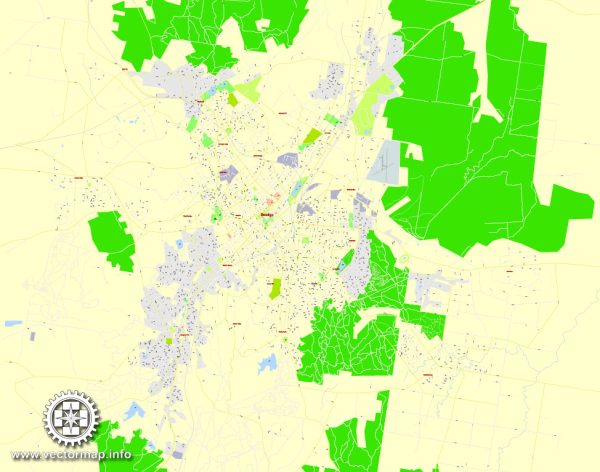The city of Bendigo, located in the state of Victoria, Australia, has a rich history of urban development that dates back to the mid-19th century. Here’s a brief overview of the key stages and aspects of its urban development history:
- Gold Rush Era (1850s): Bendigo’s history is closely tied to the Victorian Gold Rush of the 1850s. Gold was discovered in the region in 1851, leading to a massive influx of people seeking their fortunes. This marked the beginning of the city’s development as a major mining town.
- Rapid Population Growth: The discovery of gold led to a rapid population growth in the region, and the city quickly expanded to accommodate the needs of the gold miners and their families. The city was initially known as Sandhurst but was officially renamed Bendigo in 1891.
- Urban Layout: The city’s initial urban layout was characterized by a grid pattern of streets, which remains a prominent feature of Bendigo’s urban planning. Many of the streets were named after prominent figures from the era, and the city’s architecture began to reflect the prosperity brought by the gold rush.
- Architectural Heritage: Bendigo boasts a significant number of well-preserved historic buildings from the Victorian era, including grand hotels, churches, banks, and public buildings. These historic structures contribute to the city’s unique character and are a testament to its gold mining heritage.
- Public Amenities: As the city continued to grow, it saw the development of various public amenities, including parks, gardens, and civic buildings. One of the most notable examples is the Rosalind Park, which features gardens, walking paths, and a conservatory.
- Mining Legacy: Bendigo’s mining heritage is still visible in the city, with attractions like the Central Deborah Gold Mine, which offers visitors a chance to explore the underground mines and learn about the mining history of the area.
- Industrialization: In the late 19th and early 20th centuries, Bendigo diversified its economy beyond mining and became an important industrial and manufacturing center. This industrialization led to further growth and development in the city.
- Modernization and Growth: In the latter half of the 20th century and into the 21st century, Bendigo continued to modernize and expand. The city has seen residential, commercial, and infrastructural development, making it a regional hub for education, healthcare, and cultural activities.
- Cultural and Arts Hub: Bendigo is known for its vibrant arts and cultural scene. It has several museums, galleries, and cultural institutions, including the Bendigo Art Gallery, which is renowned for its extensive collection and exhibitions.
- Sustainable Development: In recent years, Bendigo has been focusing on sustainable urban development, emphasizing environmental responsibility and community engagement. Efforts have been made to preserve the city’s heritage while accommodating the needs of a growing and diverse population.
Bendigo’s history of urban development reflects its origins in the Gold Rush era, its transition to an industrial center, and its evolution into a modern and culturally vibrant city. The preservation of its historical architecture and cultural assets continues to be an essential part of the city’s identity.


 Author: Kirill Shrayber, Ph.D.
Author: Kirill Shrayber, Ph.D.